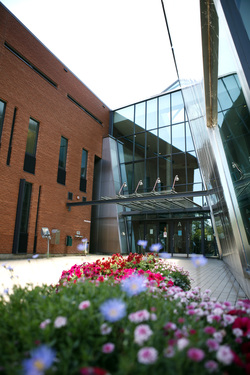
Deep Learning
Deep learning: background

Deep learning is a fairly new area of machine learning and neural network research.
It uses neural networks having several hidden layers for finding
hierarchical representations of data, starting from observations towards more and
more abstract representations. Traditionally, backpropagation type algorithms
have been used for learning appropriate representations of data in such multilayer
networks. However, when the number of hidden layers in a feedforward neural network
is larger than two, such learning algorithms suffer from several problems which make
it often impossible to find satisfactory representations of the data.
Hinton and Salakhutdinov found that unsupervised pretraining of the hidden layers
using restricted Boltzmann machines helps to obtain much better representations of the
data. The idea is not only to learn the nonlinear mapping between input and output
vectors but also a good representation of the input data. The learning results provided by
restricted Boltzmann machines can be refined and improved further by using backpropagation
type supervised learning algorithms. Trained in this manner, deep networks have provided
world-record results in many classification and regression bencmark problems, leading
to a renaissance of neural network research.
It is also possible to use multilayer perceptron (MLP) networks as auto-encoders for
finding hierarchical representations of data. In an auto-encoder MLP network, the
input and output vectors are the same, and the network includes a middle bottleneck
layer whose activations are used as a representation of data. It is essential to regularize
an autoencoder for instance by using a lower
dimensionality in the bottleneck, adding artificial noise to the inputs, or using a contractive regularizer.
Below are some general references on deep learning. Our results and publications are presented on other subpages on deep learning found under the 'Research' page.
References
Web portal on Deep learning.
R. Salakhutdinov, Learning Deep Generative Models. Doctoral thesis, MIT, USA, 2009.
Y. Bengio, ``Learning deep architectures for AI'', Foundations and Trends in Machine Learning, vol. 2, no. 1, 2009, pp. 1-127.
G. Hinton, S. Osindero, and Y.-W. Teh, ``A fast learning algorithm for deep belief nets''. Neural Computation, vol. 18, pp. 1527-1554, 2006.